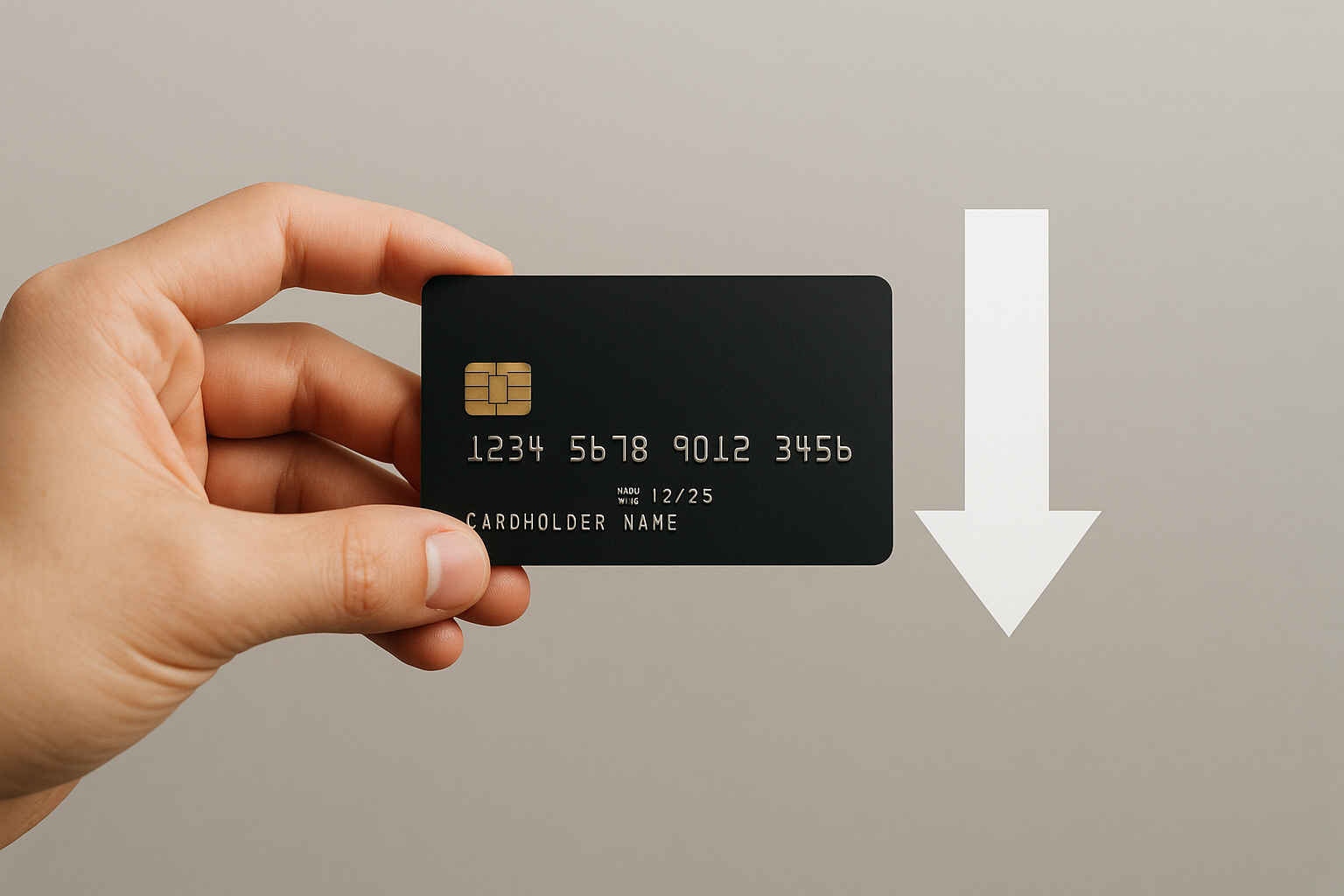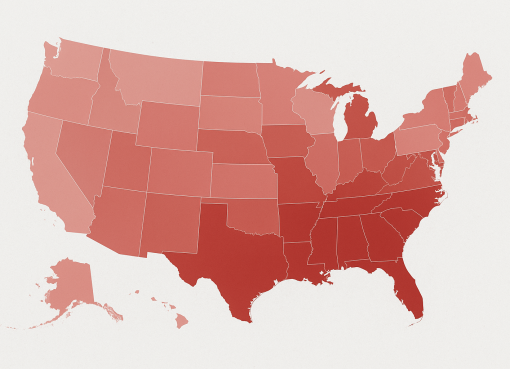Introduction
As October 2025 begins, credit card users continue to face record-high interest rates despite recent moves by the Federal Reserve to ease borrowing costs. The average credit card annual percentage rate (APR) remains above 20 percent, a level that has persisted for much of the past year. For many households, this means that carrying a balance on their credit card continues to be one of the most expensive forms of borrowing. Financial experts say that while the Federal Reserve’s recent policy shift has slightly improved overall credit conditions, the effects on credit card interest rates are expected to be limited.
Most analysts agree that any decline in credit card rates during October 2025 will be small. Financial institutions are not in a hurry to lower rates, mainly because of ongoing economic uncertainty, elevated inflation, and growing credit card delinquencies.
Why Credit Card Interest Rates Remain High?
There are several interconnected reasons why credit card rates have not dropped despite the Federal Reserve’s recent actions. These reasons involve both structural and behavioral factors in the credit market.
Structural Lag and Issuer Caution
When the Federal Reserve adjusts its policy rate, it typically affects short-term lending instruments first. However, credit card APRs, which are tied to variable prime rates, do not immediately reflect these changes. Banks often delay passing on reductions until they are certain that broader economic conditions justify them.
Financial counselors explain that if rate reductions come at all this month, they will likely be modest. Issuers are cautious because they must consider not only the Fed’s actions but also their own funding costs, profit margins, and exposure to potential defaults. With delinquency rates on the rise, especially among younger borrowers, lenders prefer to maintain higher APRs to protect against risk.
Dependence on Multiple Economic Factors
Credit card interest rates are influenced by more than just the federal funds rate. They also depend on overall consumer behavior, inflation, credit demand, and lender profitability. While the central bank’s decision to lower rates is designed to make borrowing cheaper, the effect is often muted in the credit card industry because these loans are unsecured and therefore riskier.
Experts point out that lenders must balance competitive pricing with prudent risk management. Even if the economy shows signs of stability, credit card issuers are reluctant to lower rates unless there is a consistent downward trend in inflation and a reduction in borrower defaults.
Inflation and Risk Aversion
Persistent inflation continues to limit how much banks are willing to reduce interest rates. Although inflation has eased from its peak levels, it still hovers above the target rate. Financial institutions are aware that another inflationary wave could erode profit margins, especially if they have already reduced borrowing costs. At the same time, credit card charge-off rates have been climbing. Rising living expenses and resumed student loan repayments have increased financial pressure on many consumers, leading to higher delinquency levels.
In this context, banks are choosing caution over generosity. The overall lending environment remains tight, and lenders prefer to keep rates elevated rather than risk higher losses later.
The Three Major Factors Influencing Credit Card APRs
Experts highlight three main elements that will determine whether credit card rates move downward in the months ahead: Federal Reserve policy direction, consumer credit profiles, and overall economic conditions.
1. Federal Reserve Policy and Communication
Although the Fed made a small rate cut in September, policymakers have signaled that future cuts will likely be gradual and limited. Without clear guidance that more aggressive rate reductions are coming, banks see little reason to follow suit. A single quarter-point cut does not change long-term funding dynamics or the risk environment enough to justify lowering consumer credit rates significantly.
Banks are more likely to react if they believe the Fed is embarking on a sustained cycle of easing. However, with inflation still sticky and consumer spending robust, the central bank is expected to move cautiously. This uncertainty leads lenders to adopt a “wait and see” approach.
2. Consumer Creditworthiness
Even if overall market rates decline, the impact will vary across borrowers. Individuals with strong credit scores and stable payment histories may eventually see slightly lower APRs or receive promotional offers with reduced interest. In contrast, borrowers with weaker credit profiles or higher debt-to-income ratios may experience no change or could even face higher rates due to perceived risk.
Credit card issuers use complex algorithms that adjust pricing based on borrower risk. As financial institutions monitor rising defaults, they tend to tighten their lending standards. For many cardholders, this means that the cost of carrying a balance remains high despite a broader easing in monetary policy.
3. Broader Economic Landscape
The state of the overall economy has a major influence on credit card pricing. If unemployment remains low and consumer spending continues to rise, banks will assume that inflationary pressure could persist. In such a scenario, they are unlikely to reduce rates substantially. Conversely, if consumer spending weakens or if default rates spike, issuers might lower rates to encourage borrowing—but this is a double-edged sword. Reducing rates during economic weakness can increase exposure to losses if borrowers fail to repay.
At the moment, the economic picture remains mixed. While inflation is moderating, wage growth is slowing, and household debt has reached new highs. These conditions support the case for lenders to stay conservative.
What Consumers Can Do Right Now?
Since credit card interest rates are unlikely to fall meaningfully in October 2025, consumers must focus on managing their existing debt more effectively rather than waiting for relief. Experts recommend several strategies to reduce financial stress and limit interest expenses.
Review Your Balances and Interest Rates
The first step is to understand your debt. List each credit card along with its balance, interest rate, and minimum payment. This helps you prioritize which debts to tackle first. Knowing your average interest rate also allows you to measure progress over time.
Stop Accumulating New Debt
High interest rates make carrying balances extremely expensive. To avoid further strain, try to limit new credit card purchases. Use cash, debit, or other payment methods until you have reduced existing balances. Every new purchase adds to the compounding effect of high APRs, making it harder to get out of debt.
Use the Avalanche Method
Experts recommend the avalanche method for paying down debt efficiently. This involves focusing on the credit card with the highest interest rate while making minimum payments on the rest. Once the highest-rate balance is cleared, move on to the next one. This strategy minimizes total interest costs and accelerates debt reduction.
Consider Balance Transfers or Consolidation
If you qualify, explore balance transfer offers or personal loans with lower fixed rates. Many credit card companies offer introductory 0 percent interest for six to eighteen months on transferred balances. Consolidating debt can simplify payments and reduce overall interest charges, provided you avoid accumulating new debt during the promotional period.
Automate Payments to Avoid Late Fees
Missed or late payments can trigger penalty APRs that make debt even more expensive. Setting up automatic payments ensures you never miss a due date and helps improve your credit score over time. Even paying a few days late can have lasting negative effects, so automation is a simple but powerful tool.
Seek Professional Help if Needed
If your credit card debt feels overwhelming, contact a nonprofit credit counseling agency. These organizations can help you create a realistic repayment plan, negotiate with creditors, and sometimes reduce interest rates through structured programs. Taking proactive steps early prevents small problems from turning into financial crises.
The Broader Outlook For 2025
Looking ahead, analysts predict that credit card rates will remain elevated for most of 2025, with only gradual reductions later in the year. The combination of cautious monetary policy, inflation concerns, and rising delinquencies suggests that issuers will maintain conservative lending strategies.
However, there is potential for improvement in the second half of 2025 if inflation continues to decline and the Federal Reserve signals confidence in sustained economic stability. If multiple rate cuts occur, average credit card APRs could begin to edge downward toward the end of the year. Even so, experts caution that the difference will likely be modest—perhaps half a percentage point at most.
For consumers, this means the focus should remain on personal financial management rather than external policy changes. Lowering debt balances, improving credit scores, and avoiding unnecessary borrowing remain the most effective ways to reduce interest costs and strengthen financial resilience.
Conclusion
Despite the Federal Reserve’s efforts to stimulate the economy through a modest rate cut, credit card interest rates in October 2025 remain stubbornly high. The likelihood of meaningful rate relief this month is minimal. Lenders are acting cautiously in response to persistent inflation, economic uncertainty, and higher delinquency rates.
While the broader economic environment may gradually improve, consumers cannot rely on rate reductions to ease their financial burdens. Instead, proactive debt management, disciplined spending, and smart repayment strategies are the best tools available.


